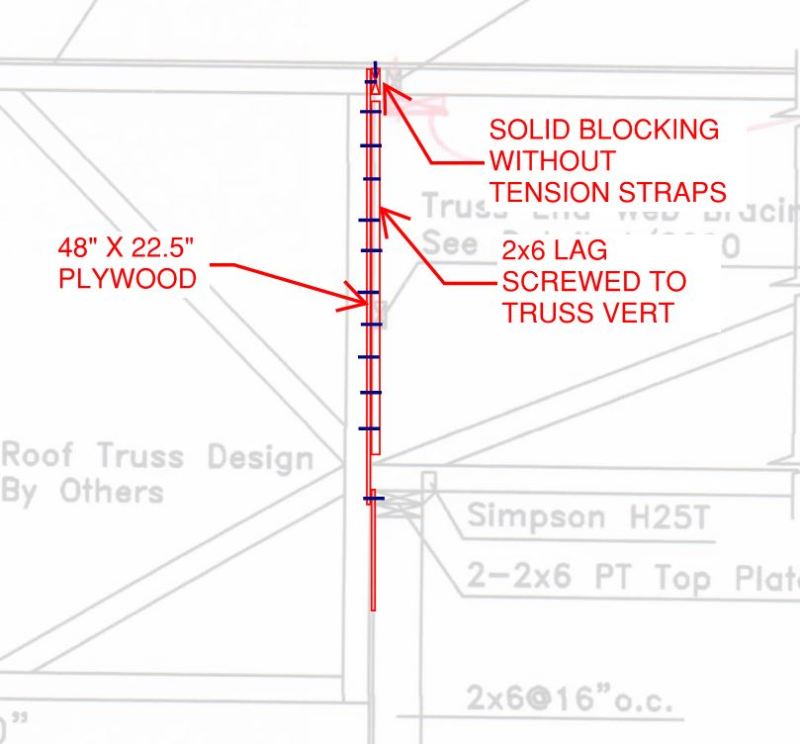SteelPE
Structural
- Mar 9, 2006
- 2,759
I am currently designing a wood framed building with wood bearing walls and a plywood diaphragm (single story). I have design almost everything but I am stumped when it comes to designing the diaphragm chord.
I have calculated the chord force for this structure to be 9,000lbs which occurs in the middle of the building. Currently my trusses are 4’ deep bottom bearing members so there is not “plate” to resist these loads. I have thought about using Simpson “Coil Straps” but I would need a few of them to develop the required capacity. How are these loads handled in this instance?
Code IBC 2009. This is a commercial building.
I have calculated the chord force for this structure to be 9,000lbs which occurs in the middle of the building. Currently my trusses are 4’ deep bottom bearing members so there is not “plate” to resist these loads. I have thought about using Simpson “Coil Straps” but I would need a few of them to develop the required capacity. How are these loads handled in this instance?
Code IBC 2009. This is a commercial building.




